Achieve success in your nursing education with the Pharmacology ATI Proctored Exam 2023-2024: Accurate & Verified Answers in Next Gen Format for Guaranteed Pass. This comprehensive study resource is designed for nursing students preparing for the ATI Pharmacology Proctored Exam, featuring accurate tested versions of the exam from 2023 to 2024. It includes a robust collection of questions that cover essential pharmacology topics such as drug classifications, mechanisms of action, therapeutic uses, side effects, adverse reactions, drug interactions, dosage calculations, and patient education. Key areas of focus include cardiovascular medications, antibiotics, analgesics, anticoagulants, antidiabetic agents, and psychotropic drugs, ensuring you’re well-prepared for the diverse scenarios encountered in the exam. Each question is paired with accurate, verified answers and detailed rationales, helping you understand complex concepts like the pharmacokinetics of beta-blockers, the nursing considerations for opioid administration, or the management of anaphylactic reactions to penicillin. Updated to align with the Next Gen format, this guide reflects the latest ATI testing standards, incorporating interactive and case-based questions that mirror the real exam experience. The ATI Pharmacology Proctored Exam typically consists of 60-70 questions, and this resource provides a realistic practice environment to build your confidence and competence. Developed with input from nursing educators and top-scoring students, this study guide guarantees a passing score through a proven, structured approach to preparation. Whether you’re studying for your first attempt or aiming to improve your score, this resource equips you with the knowledge and skills needed to excel in pharmacology and advance in your nursing career. Pass with confidence using this essential tool tailored for success in the 2023-2024 ATI Pharmacology Proctored Exam.
Preview
A nurse is monitoring a client who is receiving Epoetin alfa for adverse effects. The nurse should
identify which of the following findings as an adverse effect of this medication? (Select all that
apply)
A. Leukocytosis
B. Hypertension
C. Edema
D. Blurred vision
E. Headache – ANSWER b, e
(B.hypertension is an adverse effect of epoetin alfa
that the nurse should monitor for throughout treatment.
E.headache is an adverse effect of epoetin alfa)
A nurse is assessing a client who has chronic Neutropenia and who has been receiving
Gilgrastim. Which of the following actions should the nurse take to assess for an adverse effect
of filgrastim?
A. Assess for bone pain.
B. Assess for right lower quadrant pain.
C. Auscultate for crackles in the bases of the lungs.
D. Auscultate the chest to listen for a heart murmur – ANSWER A (Bone pain is a dose-related adverse effect of Filgrastim. It can be treated with
acetaminophen and, if necessary, an opioid analgesic)
A nurse is preparing to administer a transfusion of 300 mL of pooled platelets for a client who
has severe Thrombocytopenia. The nurse should plan to administer the transfusion over which
of the following time frames?
A. Within 30 min/unit
B. Within 60 min/unit
C. Within 2 hr/unit
D. Within 4 hr/unit – ANSWER A (Platelets are fragile and should be administered quickly to reduce the risk of
clumping. The nurse should administer the platelets within 15 to 30 min/unit)
A nurse is transfusing a unit of packed Red blood cells (PRBCs) for a client who has Anemia due
to Chemotherapy. The client reports a sudden headache and chills. The client’s temperature is
2° F higher than her baseline. In addition to notifying the provider, which of the following
actions should the nurse take? (Select all that apply.)
A. Stop the transfusion.
B. Place the client in a upright position with feet down.
C. Remove the blood bag and tubing from the IV catheter.
D. Obtain a urine specimen.
E. Infuse dextrose 5% in water through the IV – ANSWER a, c, d
(A. The nurse should stop the transfusion for a rise in temperature of 2° F and reports of chills
and fever. The client can be having a hemolytic reaction to the blood or a febrile reaction
C. The nurse should avoid infusing more PRBCs into the client’s vein, and should remove the
blood bag and tubing from the client’s IV catheter.
D. Obtaining a urine specimen to check for hemolysis is standard procedure when the client has
a reaction to a blood transfusion)
identify which of the following findings as an adverse effect of this medication? (Select all that
apply)
A. Leukocytosis
B. Hypertension
C. Edema
D. Blurred vision
E. Headache – ANSWER b, e
(B.hypertension is an adverse effect of epoetin alfa
that the nurse should monitor for throughout treatment.
E.headache is an adverse effect of epoetin alfa)
A nurse is assessing a client who has chronic Neutropenia and who has been receiving
Gilgrastim. Which of the following actions should the nurse take to assess for an adverse effect
of filgrastim?
A. Assess for bone pain.
B. Assess for right lower quadrant pain.
C. Auscultate for crackles in the bases of the lungs.
D. Auscultate the chest to listen for a heart murmur – ANSWER A (Bone pain is a dose-related adverse effect of Filgrastim. It can be treated with
acetaminophen and, if necessary, an opioid analgesic)
A nurse is preparing to administer a transfusion of 300 mL of pooled platelets for a client who
has severe Thrombocytopenia. The nurse should plan to administer the transfusion over which
of the following time frames?
A. Within 30 min/unit
B. Within 60 min/unit
C. Within 2 hr/unit
D. Within 4 hr/unit – ANSWER A (Platelets are fragile and should be administered quickly to reduce the risk of
clumping. The nurse should administer the platelets within 15 to 30 min/unit)
A nurse is transfusing a unit of packed Red blood cells (PRBCs) for a client who has Anemia due
to Chemotherapy. The client reports a sudden headache and chills. The client’s temperature is
2° F higher than her baseline. In addition to notifying the provider, which of the following
actions should the nurse take? (Select all that apply.)
A. Stop the transfusion.
B. Place the client in a upright position with feet down.
C. Remove the blood bag and tubing from the IV catheter.
D. Obtain a urine specimen.
E. Infuse dextrose 5% in water through the IV – ANSWER a, c, d
(A. The nurse should stop the transfusion for a rise in temperature of 2° F and reports of chills
and fever. The client can be having a hemolytic reaction to the blood or a febrile reaction
C. The nurse should avoid infusing more PRBCs into the client’s vein, and should remove the
blood bag and tubing from the client’s IV catheter.
D. Obtaining a urine specimen to check for hemolysis is standard procedure when the client has
a reaction to a blood transfusion)





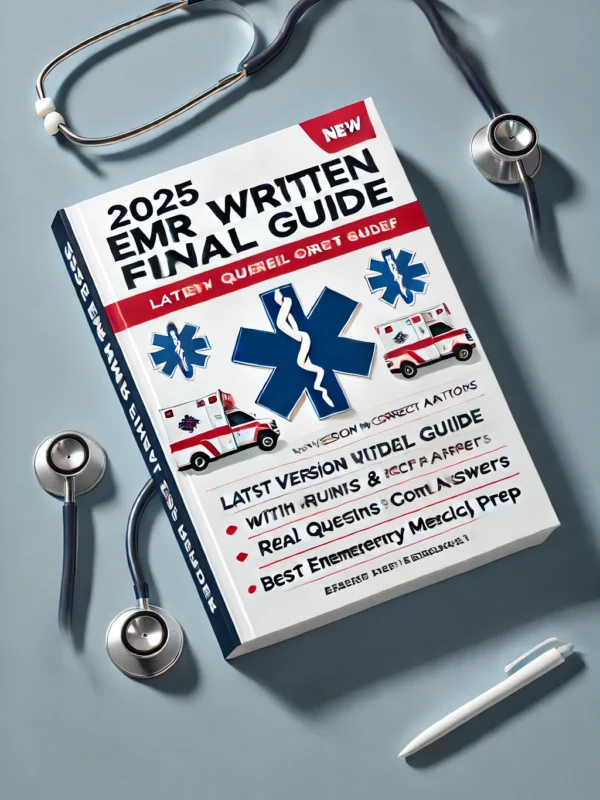
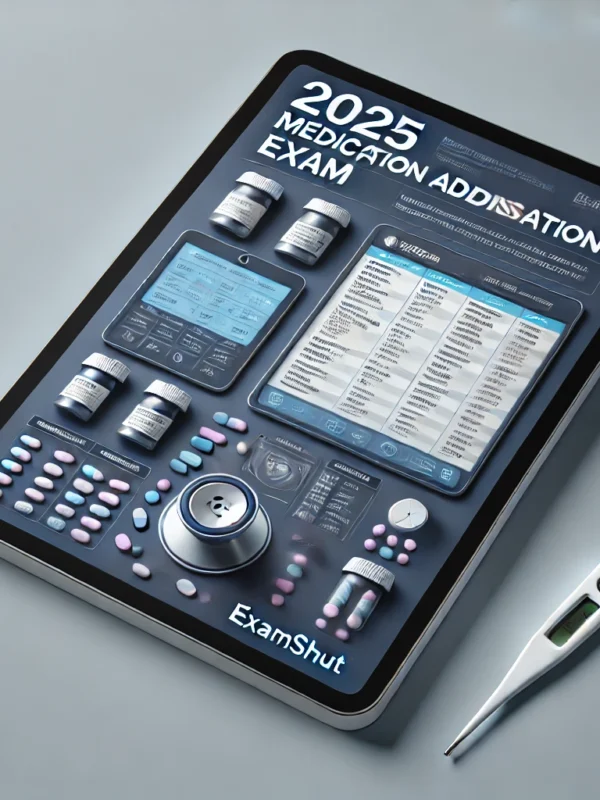
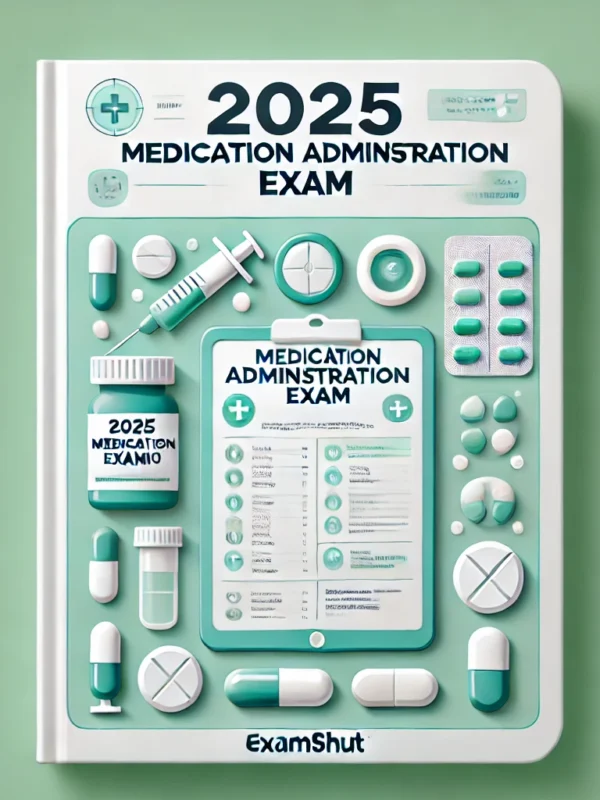
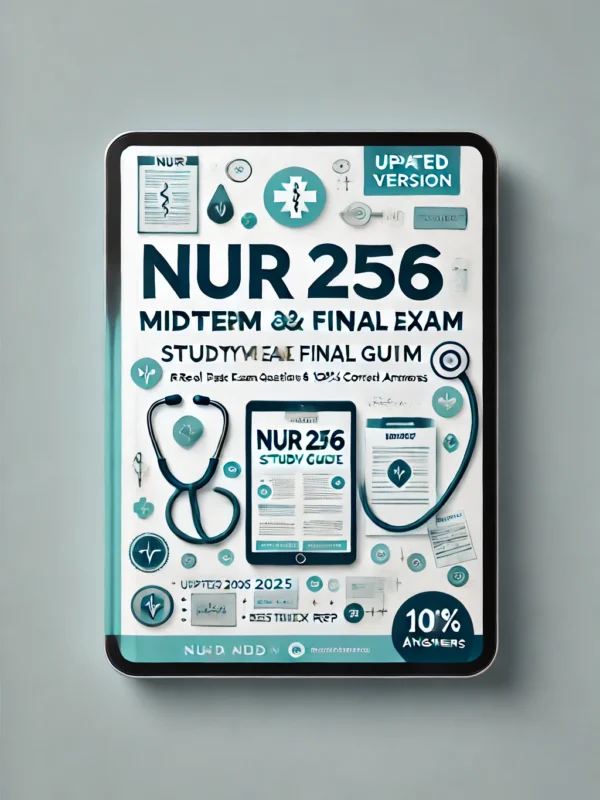
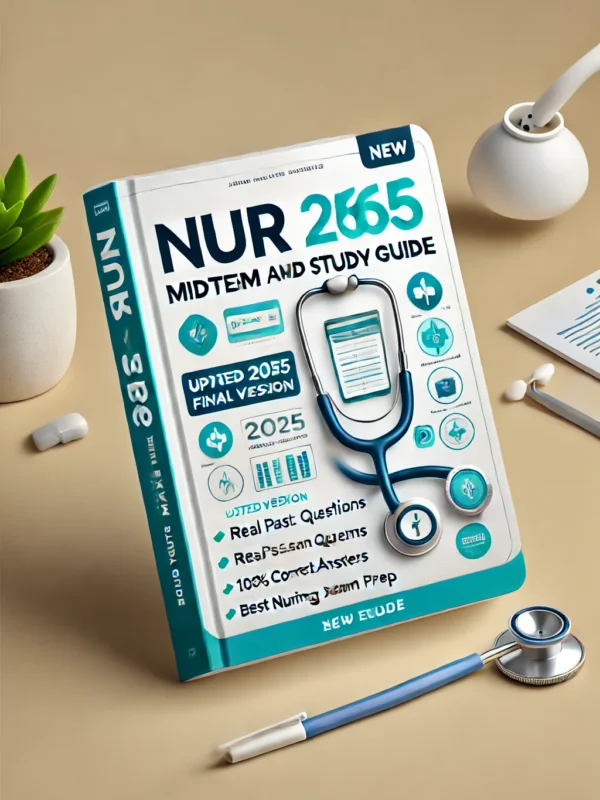

Reviews
There are no reviews yet.